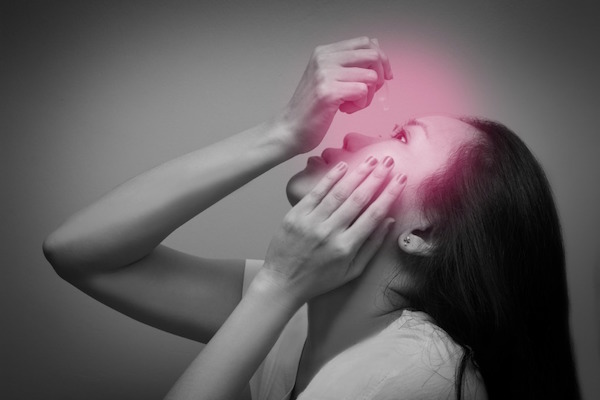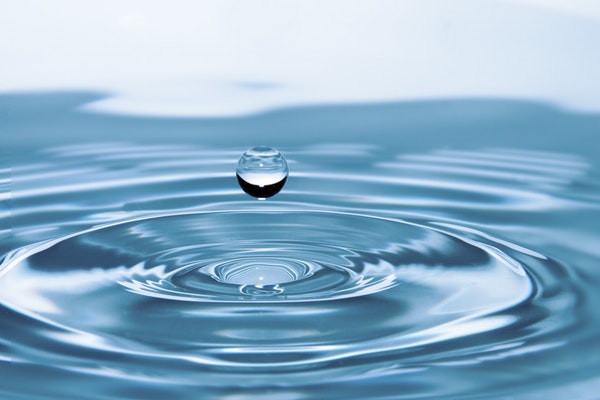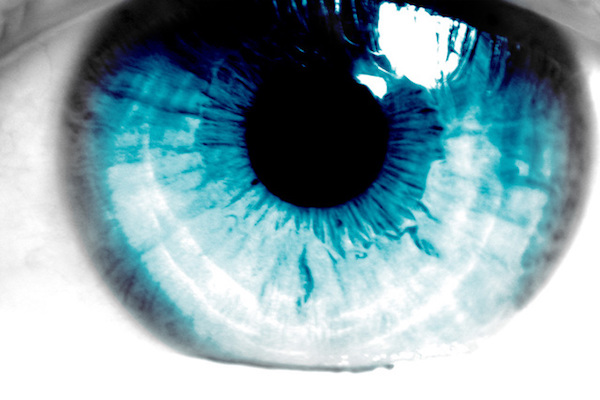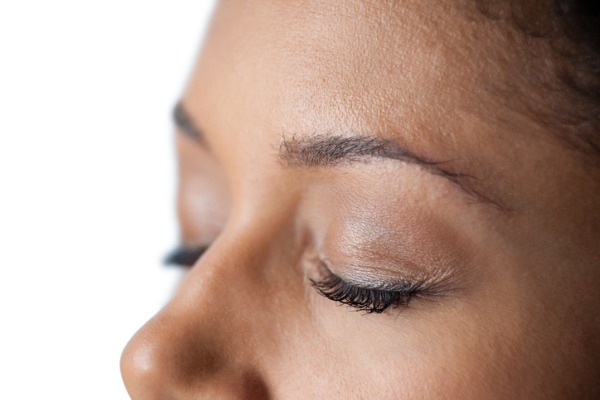
Introduction to Dry Eye – A Basic Guide for Patients
Relief is the only thing that matters to a patient suffering from dry eye.
If you’ve been suffering from dry eye, you’re probably well aware that it can burn you out in more ways than one. Not only does this new phenomenon of the optical world cause several eye related problems, it can exacerbate other health issues as well (e.g. anxiety and depression). To technically define dry eye disease, it can be described as “a multifactorial disease of the tears and ocular surface that results in symptoms of discomfort, visual disturbance, and tear film instability with potential damage to the ocular surface (1).” However, to a patient actually suffering from dry eye, a technical definition doesn’t mean anything, it’s relief that counts.

Dry Eye Disease typically present itself in two different forms, aqueous deficient and lipid deficient. Aqueous deficient dry eye occurs when the eyes aren’t making enough tears. The lipid deficient version occurs when tears evaporate too quickly. On a daily basis, most eye doctors see several patients who suffer from one or a combination of both forms of dry eye, which main symptoms include:
- Burning or stinging in the eyes
- Redness of the eyes or eyelids
- Light sensitivity
- Fluctuations in vision
- Watery eyes
- Itching
- Foreign body sensation
- Sandy or gritty feeling in the eyes
- Mucous discharge (in the corners of the eyes)
- Eye fatigue (worse towards the end of the day)
- Contact lens irritation (even the inability to wear contact lenses)
Naturally, if these symptoms get out of control, other health issues can easily be the result of the pain and discomfort associated with dry eye. Some of these overall health issues include:
- Increased stress levels
- Social discomfort
- Isolation
- Sleep disruption
- Anxiety
- Depression
Now there are several ways to diagnose dry eye, and every doctor has his or her own preferences in doing so. When I receive a new consultation, I start by handing out the Dry Eye Questionnaire, specifically something called SPEED (2). This helps to garner a thorough evaluation of a patient’s symptoms. After reviewing the Dry Eye Questionnaire, I’ll sometimes dig a bit deeper to gain my own perspective on my patient’s daily environment, whether it be work or otherwise. By doing this, I can form my own assessment of my patient’s overall eye awareness and what potential hazards may be contributing to dry eye. I’ll also discuss my patient’s home environment because the problem may be coming from inside the house, rather than outside. Some useful tests your eye doctor may use to assess dry eye include:
- Dry Eye Questionnaire
- Best corrected vision
- Eyelid assessment
- Tear film assessment
- Diagnostic dyes
- Schirmer’s test
- TEARLAB
When all of the potential hazards are identified, treatment can now be pursued. Naturally, the goal of treatment is for patients to lose awareness of their eyes as much as possible. Therapy typically requires a few changes in daily routine to help minimize symptoms and slow the progression of dry eye. When the right treatment is introduced early enough, patient relief is never too far behind. However, when the disease progresses unchecked, long-term complications tend to occur.
That said, it’s important for patients (and doctors) to remember that every dry eye case is unique. Once data is gathered from any of the above tests, the correct method of treatment can be formulated. To gather relevant data, patients should be as honest as possible during a visit to the eye doctor. Furthermore, patients should clearly state short- and long-term goals. An example of these goals could be, “I want my eyes to appear less red” or “I want to wear contact lenses while playing sports or exercising.” From personal experience, I’ve learned that several patients are afraid to mention symptoms because they’re afraid their eye doctor might make them stop wearing contact lenses for a period of time. However, it’s good to keep in mind that your eye doctor usually has your best interests in mind. If symptoms of dry eye are treated correctly, contact lens use can be resumed quickly. Moreover, patients may even feel better than before. It’s important to remember that the proper diagnosis and management of dry eye is the result of good teamwork between patient and doctor.
Increasing hydration as a proactive measure against dry eye:
Through recent findings, it has been suggested that dry eye symptoms can be improved with increased hydration. In one particular study (3), subjects were divided into two groups, then instructed to hydrate their bodies either habitually or therapeutically. Over the course of one week, the group that hydrated therapeutically saw slight improvements in their Dry Eye Questionnaire results. As a result, the study concluded that “subjects get multiple ocular benefits from increased hydration,” even though dry eye symptoms didn’t improve much.
From the wording of the study, it seems as if the benefits of increased hydration are slight. However, in my opinion, something larger might be in play. Within only one week, researchers were able to see “ocular benefits from increased hydration.” The study also noted, “more subjects and a longer course of study are needed,” but common sense tells me that there’s a pattern developing. Could one assume that slightly more “ocular benefits” would be noticed after two weeks of therapeutic hydration? What about after a month? What about after a year? Simply put, hydration may be a good habit to get into, and it’s likely a proactive measure in dealing with dry eye.
“Ocular benefits” aside, increasing hydration is probably a good idea when it comes to overall health. In fact, if you’re not aware of the health benefits of proper hydration, then you may not be paying attention. Now this indeed may be common knowledge, but I encounter several people, almost on a daily basis, who like to drink anything but water. More popular drink choices include coffee, ice tea, soda, beer, energy drinks, sports drinks, cocktails, wine and so on. For many people, an old-fashioned glass of water just isn’t on the menu.
Whether you like to drink water or not, it doesn’t change the fact that the adult human body is roughly sixty percent water. That said, it may be safe to assume that your body probably wants more of what it’s actually made of. Other beverages might taste better than water, and they all do contain some water, but hydration in its purest form is always the safest option, especially when it comes to aiding in health issues such as:
- Headaches
- Digestion
- Skin Problems
- Allergies
- Chronic Fatigue
- Hypertension
- High Cholesterol
- Weight Gain
- Aging
Unfortunately, because of our not-so-great beverage choices, many of us are dehydrated and not even aware of the problem. One way to figure out if you’re dehydrated is to pay attention to your thirst levels. If you’re experiencing thirst, you’re already dehydrated. It’s as simple as that. If you are indeed dehydrated, there are several things you can do to rehydrate, such as:
- Drink more water
- Try coconut water
- Eat hydrating foods
- Get more exercise
- Eat chia seeds
- Use a pinch of sea salt
Drinking more water is the cheap and easy way to rehydrate, but if you’re not a fan of water’s bland taste, try coconut water. However, make sure the coconut water is fresh and watch out for high sugar brands. Rehydration can also be done through diet. There are several hydrating foods including watermelon, cucumbers, celery, radishes, tomatoes, iceberg lettuce, pineapple, carrots, and a whole host of others. Chia seeds are a great option as well. This extremely healthy superfood absorbs loads of water in the body, plus they’re packed with Omega-3’s. Another good idea is adding sea salt to your water. This promotes a healthy balance between water and potassium levels in your body.
If rehydrating sounds like a daunting task, try taking small steps. If you’re already drinking enough water, maybe your quality of water can improve. If you think you need an upgrade, try switching to filtered or mineralized water. You can even try a sports drinks with electrolytes, especially if you exercise often.
Another proactive measure: Vitamin D
Other studies suggest (4), that Vitamin D plays a protective role in dealing with dry eye. It does this by acting as an anti-inflammatory agent for our tears. Since increasing Vitamin D levels is positive for our overall health, I’m led to believe that Vitamin D plus eye drops, as opposed to general eye drops alone, could be a proactive measure against dry eye.
Whenever I see a dry eye case in private practice, I typically will advise the patient to collaborate with their primary care doctor to assess for Vitamin D deficiency. If the patient is below the recommended Vitamin D levels, then supplementation may be a solid next step because Vitamin D supplementation may help to reduce:
- Symptoms of pain
- Eye fatigue
- Light sensitivity
- Blurred vision
Of course, it also helps to go outside and get some sunshine. Ideally, twenty minutes of mid-day sun will increase Vitamin D levels. If you can’t get outside, or it’s too cloudy where you live (hence the term “seasonal depression”), then a healthy diet and increased supplementation may be your best bet. There are several foods rich in Vitamin D. Most of them come in fish form so remember to purchase wild caught whenever possible. Fish sources rich in Vitamin D include sockeye salmon, steelhead trout, catfish, herring and cod. Other food sources high in Vitamin D include:
- Portobello mushrooms
- Egg yolk
- Oysters
- Milk
It bears mentioning again that it’s best to get blood work done to determine Vitamin D deficiency prior to supplementation. This will help to avoid toxicity. If ever in doubt, stick to obtaining vitamin D from the sun and the aforementioned foods. Your primary care doctor should be able to guide you otherwise.
Concerning the treatment of dry eye, the eye care industry is definitely moving in the right direction through the approval of new treatment options. However, if dry eye can’t be controlled through eye drops and other doctor prescribed methods, then outside factors such as increased hydration and Vitamin D intake could be a game changer.
Even though dry eye disease poses a completely different threat than other challenges in health and eye care, keeping it in check can prevent a long cycle of pain, blurry vision, and light sensitivity along with all of the other associated health risks for patients.
Sources:
- TFOS DEWS II published in the Ocular Surface Journal, July 2017.
- TearScience SPEED Dry Eye Questionnaire
- Khan C, et al. Therapeutic effects of increased hydration for plasma osmolality, tear osmolarity and tear stability in dry eye patients.
- Tovey, A. & Cannell, J. New study suggests vitamin D deficiency is related to dry eye.







